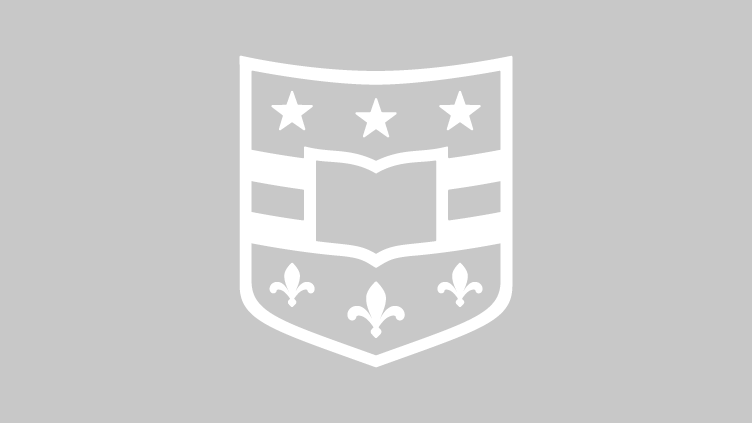Washington University alum shares Nobel Prize in chemistry
Washington University in St. Louis alumnus W. E. Moerner, PhD, has been awarded the Nobel Prize in chemistry. Moerner shares the award, announced Oct. 8 by the Royal Swedish Academy of Sciences, with Eric Betzig, PhD, of the Howard Hughes Medical Institute, and Stefan W. Hell, PhD, of the Max Planck Institute for Biophysical Chemistry, in Germany. The trio received the award for developing super-resolved fluorescence microscopy.
Alum’s social enterprise, Gold Mountain Coffee Growers, connects Nicaraguan producers to specialty roasters
Ben Weiner, a 2003 Washington University in St. Louis alum, connects Nicaraguan coffee growers and roasters through his social enterprise Gold Mountain Coffee Growers. The result: a better cup of coffee, like the new Wash U Blend, and better pay for producers.
Gott joins Washington University Symphony Orchestra Oct. 13
Pity the poor bassoon — large and awkward, often consigned to comic roles, its warm, mellow harmonics overshadowed by the thunder and lightening of piano and violin. But on Oct. 13, St. Louis Symphony bassoonist Andrew Gott and the WUSTL Symphony Orchestra will showcase the bassoon in all its expressive potential.
Psychology researchers receive NSF grant to study preschool learning
Two psychology researchers at Washington University in St. Louis have received a $620,000 grant from the National Science Foundation for the project “Preschoolers’ Use of Statistical Learning to Discover Spelling and Reading Conventions Prior to Formal Schooling.”
Remembering Freedom Summer and ‘A Love Supreme’
This year marks the 50th anniversary of Freedom Summer, in which thousands of volunteers helped register African-American voters in Mississippi, and of John Coltrane’s landmark album “A Love Supreme.” On Thursday, Oct. 9, Washington University will celebrate both anniversaries with a free Jazz at Holmes concert.
Assembly Series to tackle issue of energy impoverishment
In the 2013 book, “Fires, Fuel & the Fate of 3 Billion: The State of the Energy Impoverished,” Brown School Professor Gautam N. Yadama, PhD, and critically acclaimed photographer Mark Katzman, presented the complex story of energy impoverishment — an issue that affects a staggering 3 billion people worldwide — by inserting the reader into the personal stories of struggle and survival throughout rural India. At 5 p.m. Monday, Oct. 13, in Anheuser-Busch Hall’s Bryan Cave Moot Courtroom, Yadama will present his work for the Assembly Series and the School of Law’s Public Interest Law & Policy Speakers Series.
Edison welcomes Arabesque Oct. 24-25
Drawing on ballet and contemporary dance, Arabesque captures the ancient, agrarian rhythms of life in rural Vietnam. On Oct. 24 and 25, the celebrated company, which is based in Ho Chi Minh City, will make its U.S. premiere as part of the Edison Ovations Series.
PAD presents Naomi Iizuka’s ‘Anonymous’
Tired and hungry and far from home, cast adrift by angry powers, the hero escapes monsters, navigates hostile lands and struggles to reunite with beloved family. In “Anonymous,” Naomi Iizuka pays sly homage to “The Odyssey” of Homer, reimagining a foundational work of Western literature through the lens of contemporary immigration.
Supreme procrastination: Why nation’s highest court puts off big decisions until the last moment
Several “blockbuster” cases — including freedom of speech, religious freedoms in prison, pregnancy discrimination and a possible decision on gay marriage — are on the docket for the Supreme Court, which begins its new session this month. But don’t expect any decisions until next June. New research led by the School of Law finds big cases are disproportionately decided just before the court’s summer recess.
Perloff to receive Washington University International Humanities Medal
Poetry scholar Marjorie Perloff will receive the 2014 International Humanities Medal from Washington University in St. Louis. Granted biennially, the $25,000 award is largest prize from an American institution to cover the broad spectrum of the humanities.
View More Stories

